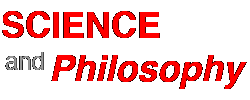Reading on: Neuroscience and progress
Where it came from and where it is going.
Churchland, Patricia Smith Brain-Wise: Studies in Neurophilosophy The MIT Press, Cambridge, MA 2002 [abridged – 1600 words]
Why did progress in neuroscience lag so far behind progress in astronomy or physics or chemistry? Why is the blossoming of neuroscience really a late-twentieth-century phenomenon? This question is especially poignant since Hippocrates some four hundred years B.C. had realized that the brain was the organ of thought, emotion, perception, and choice.
The crux of the problem is that brains are exceedingly difficult to study. Imagine Hippocrates observing a dying gladiator with a sword wound to the head. The warrior had lost fluent speech following his injury, but remained conscious up to the end. At autopsy, what theoretical resources did Hippocrates possess to make sense of something so complex as the relation between the loss of fluent speech and a wound in the pinkish tissue found under the skull? Remember, in 400 B.C. nothing was understood about the nature of the cells that make up the body, let alone of the special nature of cells that make up the brain. That cells are the basic building blocks of the body was not really appreciated until the seventeenth century, and neurons were not seen until 1837.
Techniques for isolating neurons to reveal their long tails and bushy arbors were not available until the second half of the nineteenth century, when stains that filled the cell were invented. Neurons are very small, and unlike a muscle cell, each neuron has long branches— its axon and dendrites. There are about 10^5 neurons per cubic millimeter of cortical tissue, for example, and about 10^9 synapses. Techniques for isolating living neurons to explore their function did not appear until well into the twentieth century.
By contrast, Copernicus, Galileo, and Newton were able to make profound discoveries in astronomy without highly sophisticated technology. Figuring out how neurons do what they do requires very high-level technology. And that, needless to say, depends on an immense scientific infrastructure: cell biology, advanced physics, twentieth-century chemistry, and post-1953 molecular biology. It requires sophisticated modern notions like molecule and protein, and modern tools like the light microscope and the electron microscope, and the latter was not invented until the 1950s. Many of the basic ideas can be grasped quite easily now, but discovering those ideas required reaching up from the platform of highly developed science.
To have a prayer of understanding the nervous system, it is essential to understand how neurons work, and that was a great challenge technically. The most important conceptual tool for making early progress on nervous systems was the theory of electricity. What makes brain cells special is their capacity to signal one another by causing fast micro changes in each others’ electrical states. Movement of ions, such as Na+, across the cell membrane is the key factor in neuronal signaling, and hence in neuronal function. Living as we do in an electrical world, it is sobering to recall that as late as 1800, electricity was typically considered deeply mysterious and quite possibly occult. Only after discoveries by Ampere (1775—1836) and Faraday (1791—1867) at the dawn of the nineteenth century was electricity clearly understood to be a physical phenomenon, behaving according to well-defined laws and capable of being harnessed for practical purposes. As for neuronal membranes and ions and their role in signaling understanding these took much longer.
Beginning in the I 950s, progress had been made in addressing learning and memory at the systems level, and by the late 1970s, intriguing data on neuronal changes mediating system plasticity permitted the physiology of learning and memory to really take off. Meanwhile the role of specific neurochemicals in signaling and modulating neuronal function was beginning to be unraveled, and associated with large-scale effects such as changes from being awake to being asleep, to memory performance, to pain regulation, and to pathological conditions such as Parkinson’s disease and obsessive-compulsive disorder. By the 1980s, attention functions came within the ambit of neuroscience, and changes at the neuronal level could be correlated with shifts in attention.
While cognitive functions at the network and neuronal level were being explored, details continued pour in to update the story of the ultrastructure of neurons — their synapses, dendrites, and gene expression within the nucleus — and how cognitive function was related to various ultra structural operations.
Nevertheless, many fundamental questions about how the nervous system works remain wide open. In particular, bridging the gap between activity in individual neurons and activity in networks of neurons has been difficult. Macro level operations depend on the orchestrated activity of many neurons in a network, and presumably individual neurons make somewhat different contributions in order for the network to achieve a specific output, such as recognition of visual motion or a command to move the eyes to a specific location. Moreover, understanding the dynamics of patterns of activity in neural networks and across many networks is undoubtedly essential to understanding how integration and coherence are achieved in brains. For example, there appear to be “competitions” between networks as the brain settles on a decision whether to fight or flee, and if to flee, whether to run in this direction or that, and so on. We are just beginning to feel our way toward concepts that might be helpful in thinking about the problems of coherencing.
Until very recently, neuronal responses could be probed only one neuron at a time, but if we cannot access many neurons in a network, we have trouble figuring out how any given neuron contributes to various network functions, and hence we have trouble understanding exactly how networks operate.
Significant technical progress has been made in recording simultaneously from more than one neuron, and the advent of powerful computers has made the problems of data analysis somewhat more tractable. Nevertheless, the search is on for technical breakthroughs that will really mesh micro level experimentation with systems-level data. We are also uncertain how to identify what, among the billions of neurons, constitutes one particular network, especially since any given neuron undoubtedly has connections to many networks, and networks are likely to be distributed in space. To make matters yet more interesting, what constitutes a network may change over time, through development, and even on very short time scales, such as seconds, as a function of task demands.
Obviously, these problems are partly technical, but they are also partly conceptual, in the sense that they require innovative concepts to edge them closer to something that can motivate the right technological invention for neuro-biological experiments.
The advent of new safe techniques for measuring brain activity in humans has resulted in increasing numbers of fruitful collaborations between cognitive scientists and neuroscientists. When the results of techniques such as functional magnetic resonance imaging (fMRI) and positron emission tomography (PET) converge with results from basic neurobiology, we move closer to an integrated mind-brain science. These techniques can show something about the changes in regional levels of activity over time, and if set up carefully, the changes can track changes in cognitive functions.
It is important to understand that none of the imaging techniques measure neuronal activity directly. They track changes in blood flow (hemodynamics). Because the evidence suggests that localized increases in blood flow are a measure of local increases in neuronal activity (more active neurons need more oxygen and more glucose), they are believed to be an indirect indication of changes in levels of activity in the local neuronal population. Note also that the recorded changes are insensitive to what individual neurons in a region are doing. The best spatial resolution of PET is about 5 mm, and in fMRI it is about 2 mm, though these resolutions may improve. Since one cubic mm of cortex contains about 100,000 neurons, the spatial resolution of these techniques does not get us very close to single-neuron activity.
In the last fifty years, we have come to realize that epilepsy is best understood in neurobiological terms, not in terms of the divine touch. Hysterical paralysis is not a dysfunction of the uterus, but of the brain. In subjects who are compulsive hand washers, possession by spirits or superego dysfunction explains and predicts far less than neuromodulator levels. The discovery that highly addictable subjects have a gene implicated in the quirks of their dopamine reward system begins to hint that we will want to reconsider what exactly having or lacking will power comes to. None of this is surprising, for what the history of science reveals is that some theory revision is typical and pretty much inevitable, no matter what the domain of inquiry — astronomy, physics, biology, or the nature of our minds. That the story structure giving shape to traditional philosophical inquiry may itself evolve, perhaps quite profoundly, accordingly presents an even deeper challenge to those who wish to isolate philosophy from science.
If we allow discoveries in neuroscience and cognitive science to butt up against old philosophical problems, something very remarkable happens. We will see genuine progress where progress was deemed impossible; we will see intuitions surprised and dogmas routed. We will find ourselves making sense of mental phenomena in neuro-biological terms, while unmasking some classical puzzles as pre-neuroscientific misconceptions.
Neuroscience has only just begun to have an impact on philosophical problems. In the next decades, as neurobiological techniques are invented and theories of brain function elaborated, the paradigmatic forms for understanding mind-brain phenomena will shift, and shift again. These are still early days for neuroscience. Unlike physics or molecular biology, neuroscience does not yet have a firm grasp of the basic principles explaining its target phenomena. The real conceptual revolution will be upon us once those principles come into focus. How things will look then is anybody’s guess.


